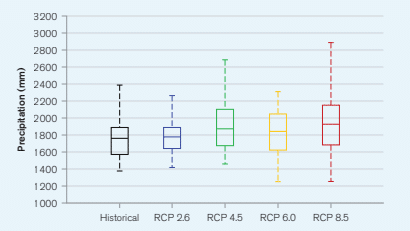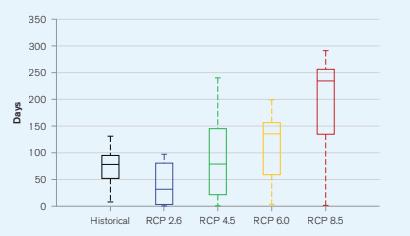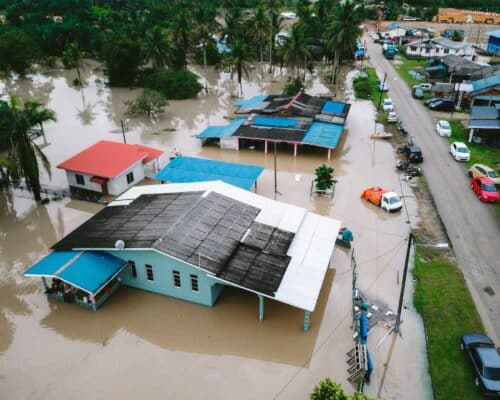Climate Change in Cambodia: A Growing Concern
Source: Khmer Times
06 March 2024 – by Eric Koons Comments (0)
Climate Change in Cambodia 2024
Cambodia faces serious risks from climate change due to its slow economic growth and geographic location. These impacts of climate change in Cambodia juxtapose the country’s low greenhouse gas emissions of 1.1 tonnes of CO2 per capita, ranking it at 158th in the world. This accounts for less than 0.1% of global greenhouse gas emissions.
However, 80% of the country’s population lives in rural areas, and nearly 20% lives in poverty. These groups face growing exposure to changing climate patterns and will struggle to adapt to climate impacts. As a result, 42% of Cambodian communities are ranked as vulnerable or highly vulnerable to climate change.

Combined, these challenges make Cambodia the 12th most vulnerable country in the world to climate change impacts. This paradox underscores a critical narrative in many developing nations. Although these countries contribute minimally to climate issues, they face disproportionate consequences, necessitating a global cooperative approach to mitigation and adaptation strategies.
What Are the Climate Conditions in Cambodia?
Cambodia’s climate is primarily tropical and governed by the monsoon seasons, which dictate variations in rainfall and temperature throughout the year. The southwest monsoon runs from May to October, bringing nearly 75% of the country’s annual rainfall. Throughout the year, temperatures remain high with corresponding high humidity. Average monthly temperatures range from 22-34°C, with humidity in the capital of Phnom Penh averaging 77%.
These conditions pose several concerns to the forestry sector and agricultural and fishery production. Changing weather patterns can shift rainfall, leading to both floods and droughts. Additionally, higher temperatures and existing humidity rates are a major concern for human health.
How Will Cambodia Be Affected by Climate Change?
Cambodia’s vulnerability to climate change is alarmingly high. It is considered one of the most susceptible countries globally due to its geographic, social and economic dynamics.
Changing Weather Patterns: Droughts and Floods
One of the leading concerns is how weather patterns will shift. Projections show that average temperatures will rise, while the southwest monsoon will occur later. There will also be less rainfall during the dry season. At the same time, rain during the southwest monsoon will increase.

This means that rain events will become much more condensed and extreme, something the country’s infrastructure is not prepared to handle. As a result, the risk of flood events will increase, putting an additional 4 million people at risk of extreme floods by the 2040s. At the other end of the spectrum, drought periods during the typical dry season will rise. By 2100, what were once 1-in-100-year droughts will end up occurring every 50 years.
As a result of these changes, there will be significant impacts across the country. One of the most notable is that agricultural output will fall. For example, rice is one of the country’s staple crops, and global warming in Cambodia will lead to a 10% to 15% decline in productivity by the 2040s. This will not only reduce access to food for local communities but also be a major economic burden for the 35% of the population working in the agricultural sector. The impact of droughts and floods will decrease Cambodia’s GDP by 10% by 2050.
Extreme Heat: Health, Food Security and Economic Burden
Average temperatures will rise by 3.1°C by 2090, and temperature fluctuations will be more extreme. This will be compounded by the urban heat island effect, with Phnom Penh seeing temperatures up to 4°C higher than rural areas. Overall, heat waves will occur more often and last for longer periods. Depending on the emissions rate in the coming decades, up to 300 days every year could exceed 35°C – the threshold where heat becomes a significant concern for human health.

This will put at-risk populations, like children, older people and outdoor labourers, at risk of heat-related illnesses and will impact food security. Currently, 37.1% of the country’s children are exposed to extreme heat events. Meanwhile, the country is facing economic losses of USD 1.12 billion from heat stress, which will increase in the coming decades.
Extreme Weather Events Due to Greenhouse Gas Emissions
Along with changing weather patterns, the weather will become stronger. There is little country-level data available for Cambodia, but regional trends show an increased rate of cyclones, wind speeds and storm surges. Combined with rising sea levels, these changes will expose a growing portion of the country’s southwest to ocean-related extreme weather events.
Cambodia’s Climate Change Policy and Sustainable Development Goals
In response to these challenges, Cambodia is implementing adaptation and mitigation policies aimed at a 27% reduction in greenhouse gas emissions by 2030 and net-zero emissions by 2050. A core component of these goals is to increase forest cover by 60% before 2030 and reduce emissions from land use before 2030.
Another major focus is Cambodia’s energy sector, which is trying to source 70% of its energy from renewable sources by 2030. The Royal government has already implemented several programs to support these goals, such as increasing the size of protected forests, a federal carbon credit program and a national plan for the cooling sector.
Navigating Climate Change Together: The Cambodia Climate Change Alliance Sets an Example
However, these actions are just the first steps in a significantly more comprehensive climate change strategy that will require support from the international community. The World Bank notes that there is a significant financial gap between the country’s climate strategy and domestic investment.
An initial step to address this challenge is the Cambodia Climate Change Alliance (CCCA), which is a partnership between Cambodia, the United Nations, Sweden and the European Union. The group provides technical support and financing for climate resilience projects within Cambodia. To date, the CCCA has played a major role in helping Cambodia develop its National Determined Contribution (NDC), develop solar facilities and build climate-resilient water infrastructure.
The CCCA highlights how impactful international collaboration is for Cambodia and other developing nations. These types of partnerships will continue to grow in importance and will be pivotal for Cambodia to catalyse investment and reach its net-zero target.
by Eric Koons
Eric is a passionate environmental advocate that believes renewable energy is a key piece in meeting the world’s growing energy demands. He received an environmental science degree from the University of California and has worked to promote environmentally and socially sustainable practices since. Eric’s expertise extends across the environmental field, yet he maintains a strong focus on renewable energy. His work has been featured by leading environmental organizations, such as World Resources Institute and Hitachi ABB Power Grids.
Read more





